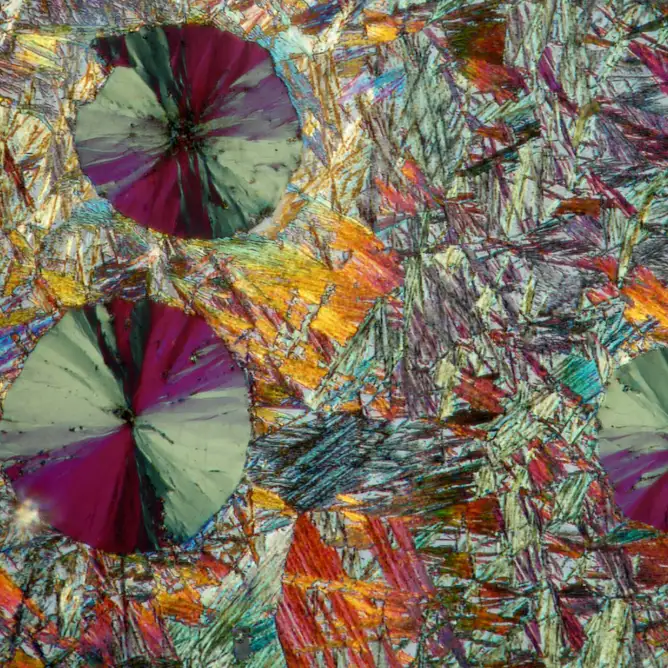Austempered Ductile Iron (ADI) is a heat-treated form of ductile iron that has garnered significant attention in various industries due to its exceptional mechanical properties and cost-effectiveness. By undergoing a specialized austempering heat treatment process, ADI achieves a unique microstructure that imparts superior strength, wear resistance, and toughness compared to traditional cast irons and steels.

Understanding Austempered Ductile Iron (ADI)
Austempered Ductile Iron (ADI) is a specialized form of ductile iron that undergoes an austempering heat treatment process to achieve a unique microstructure. This process enhances its mechanical properties, making it suitable for demanding applications where strength, toughness, and wear resistance are critical.
Microstructure of ADI
The microstructure of ADI is primarily composed of ausferrite, a mixture of acicular ferrite and retained austenite. This structure provides a combination of high strength and ductility. The presence of spheroidal graphite nodules further contributes to its improved mechanical properties by reducing stress concentrations and enhancing fatigue resistance.
Mechanical Properties of ADI
| Property | Value Range |
|---|---|
| Yield Strength | 500 – 1400 MPa |
| Ultimate Tensile Strength | 700 – 1600 MPa |
| Hardness (HB) | 200 – 400 |
| Elongation | 5% – 15% |
| Impact Toughness | High |
| Wear Resistance | Excellent |
These properties make ADI comparable to heat-treated steels, offering a cost-effective alternative without compromising performance.
Heat Treatment Process
The austempering process involves heating ductile iron to a temperature where austenite forms and then cooling it rapidly to a temperature where bainite forms. This is followed by isothermal holding to allow the transformation to ausferrite. The precise control of time and temperature during this process is crucial to achieving the desired mechanical properties.
Comparison: ADI vs. Traditional Materials
| Property | ADI | Gray Cast Iron | Steel |
|---|---|---|---|
| Castability | Excellent | Excellent | Good |
| Strength | High | Moderate | Very High |
| Toughness | High | Low | Very High |
| Wear Resistance | Excellent | Moderate | High |
| Cost | Moderate | Low | High |
ADI offers a balance between the excellent castability of gray cast iron and the high strength of steel, making it a versatile material for various applications.
Applications of ADI
ADI is used in a wide range of applications, including:
-
Automotive components such as gears, crankshafts, and suspension parts.
-
Agricultural machinery like plowshares and harrow discs.
-
Railway components including wheels and couplers.
-
Mining equipment such as crusher liners and excavator buckets.
-
Construction machinery parts like bulldozer blades and loader arms.
Its versatility makes ADI a preferred choice in industries where performance and cost are critical considerations.
Advantages of ADI
-
High Strength-to-Weight Ratio: ADI provides high strength without the weight penalty of steel, making it ideal for weight-sensitive applications.
-
Excellent Wear Resistance: The ausferritic microstructure offers superior wear resistance, extending the lifespan of components.
-
Cost-Effectiveness: ADI is more economical to produce than forged steel, offering similar performance at a lower cost.
-
Good Machinability: Despite its high strength, ADI retains good machinability, facilitating complex part designs.
-
Versatility: Available in various grades, ADI can be tailored to meet specific performance requirements.
Limitations of ADI
-
Brittleness at Low Temperatures: ADI may exhibit reduced toughness at sub-zero temperatures, limiting its use in cryogenic applications.
-
Sensitivity to Heat Treatment: The mechanical properties of ADI are highly dependent on the heat treatment process; any deviation can lead to suboptimal performance.
-
Limited Availability of Grades: Not all foundries offer a wide range of ADI grades, potentially limiting material selection.
Future Trends in ADI Development
Ongoing research aims to enhance the properties of ADI by exploring:
-
Alloying Additions: Incorporating elements like molybdenum and vanadium to improve strength and wear resistance.
-
Advanced Heat Treatment Techniques: Developing more precise and energy-efficient heat treatment processes.
-
Recycling and Sustainability: Implementing recycling methods to reduce environmental impact and improve sustainability.
Frequently Asked Questions (FAQs)
1. What is Austempered Ductile Iron (ADI)?
Austempered Ductile Iron (ADI) is a heat-treated form of ductile iron that undergoes an austempering process to achieve a unique microstructure. This process enhances its mechanical properties, making it suitable for demanding applications where strength, toughness, and wear resistance are critical.
2. How does the austempering process affect the properties of ductile iron?
The austempering process transforms the microstructure of ductile iron into ausferrite, a mixture of acicular ferrite and retained austenite. This transformation significantly improves the material’s strength, toughness, and wear resistance, making it comparable to heat-treated steels.
3. What are the primary applications of ADI?
ADI is used in various applications, including automotive components, agricultural machinery, railway parts, mining equipment, and construction machinery. Its versatility and superior properties make it a preferred choice in these industries.
4. How does ADI compare to traditional materials like gray cast iron and steel?
ADI offers a balance between the excellent castability of gray cast iron and the high strength of steel. It provides high strength and toughness at a lower cost compared to steel, while maintaining good castability.
5. What are the advantages of using ADI over other materials?
ADI offers several advantages, including a high strength-to-weight ratio, excellent wear resistance, cost-effectiveness, good machinability, and versatility. These properties make it an attractive alternative to traditional materials.
6. Are there any limitations to using ADI?
While ADI offers numerous benefits, it has some limitations, such as reduced toughness at low temperatures, sensitivity to heat treatment variations, and limited availability of grades in some regions. These factors should be considered when selecting materials for specific applications.
In conclusion, Austempered Ductile Iron (ADI) represents a significant advancement in materials engineering, offering a combination of high strength, toughness, and wear resistance at a cost-effective price point. Its unique properties make it suitable for a wide range of applications, positioning it as a viable alternative to traditional materials in various industries.
